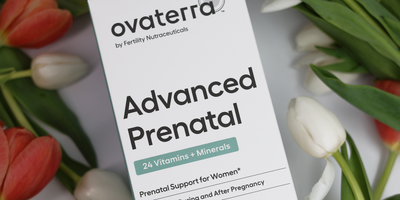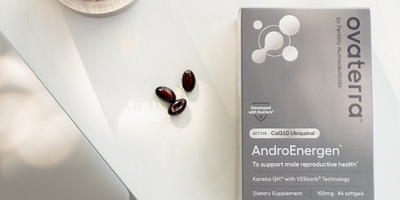How long do you think an egg takes to go from the immature stage to be ovulation-ready?
- Eggs mature with the menstruation cycle, so it takes 28 days on average.
- Women are born with all the eggs for her entire reproductive life, so it can be 40+ years.
- Immature eggs lay dormant until they start the maturation process, and that takes 90-120 days.
- It varies widely by person.
The answer is C, but there is a bit of truth to all of the choices. Starting even before we are born, female eggs have a surprisingly long journey to mature and reach ovulation. Let’s break it down.
Do women produce eggs throughout life?
Women are born with all the eggs for their entire lifetime. In contrast to men, who produce new sperm throughout their lives, women don’t produce new eggs after birth. The eggs lay dormant in the ovaries for years, until they are initiated into the maturation process that takes just one of them to ovulation-ready stage each month.
In the last 15 years, a few studies have identified ovarian stem cells, hinting at the possibility that women may keep making eggs throughout their lives from ovarian stem cells. However, this new theory has been challenged, partially because other research teams have been unable to reproduce the results. While some scientists consider this a possibility, a 2020 study that examined 24,000 cells in the ovarian cortex could not identify a single ovarian stem cell that may become new eggs. As of now, the consensus is that women probably don’t produce new eggs.
Egg counts by age
Egg production begins before women are born. In fact, we reach the peak of egg count when we are still in the uterus, at around 20 weeks after conception. At that stage, female fetus may have as many as 6-7 million immature eggs in the ovaries. By the time babies are born, the pool of immature eggs has shrunk to 1-2 million on average.
After birth, more eggs are lost to apoptosis. Scientists have estimated around 200,000 eggs remain in our ovaries by puberty.
Once women reach puberty and menstrual cycles set in, a handful of immature eggs are “recruited” each month into the process of maturation. Most of the eggs that starts the process do not reach ovulation, with (usually) just one egg reaching full maturation each cycle. In the entire female reproductive lifespan, roughly 400-450 will ever reach ovulation. At menopause, scientists estimate about 1,000 eggs remaining in the ovaries.
As many of us know, female egg count declines gradually in our teens and 20s, then starts a more rapid decline at around age 35. This is one reason female fertility declines with age – there simply aren’t as many eggs with potential to become a baby. The other side of the coin is the quality of these eggs, which takes us to how immature eggs develop once they are “recruited” into the maturation process.
Follicle activation and egg maturation
Just like a sperm cell, each egg cell needs one set of 23 chromosomes, so that an embryo from an egg and a sperm would have the correct two sets of 23 chromosomes. A special type of cell division called meiosis produces egg cells with one set of chromosomes, ensuring the accuracy of this genetic math.
Eggs go through two cycles of meiotic cell division. The first meiosis starts in utero, but stops before birth. From birth until the time each egg is activated to begin the final maturation process, the immature egg is held in a state of little to no biological activity. A group of cells called granulosa cells surround the immature egg, providing structural support. This dormant period – called meiotic arrest – can last up to 50 years in humans.
After puberty, a handful of immature eggs start their final maturation journey toward ovulation. This is called ovarian follicle maturation or recruitment. Once recruited, eggs (called primary oocytes at this stage) and follicles (the fluid-filled sacks that hold the eggs and support cells) grow in size, shape and function.
This maturation process is tightly controlled by the endocrine system. Numerous reproductive hormones (including androgens, surprisingly) activate and inhibit processes at precise moments to ensure the healthy maturation of eggs.
For example, follicles develop receptors to follicle-stimulating hormone (FSH) at this stage, which will later drive the eggs’ maturation process. Eggs resume the first cycle of myosis, and once complete, primary oocytes become secondary oocytes with just one set of chromosomes.
Right after the first cycle of meiosis is complete, the eggs start the next phase of meiosis. At this point, the eggs are called secondary oocyte. However, they are again held in meiotic arrest until fertilization. It takes 45-60 days from the initial recruitment to the secondary follicle stage – and another 45-60 days until a single egg from the same cohort to reach ovulation.
What does this mean for my reproductive health?
Because our eggs age with us, some age-related egg damage may be inevitable. However, some reproductive endocrinologists think that the immature eggs held in dormant state are much less vulnerable to damages than other cells with active metabolism.
In addition, studies have suggested that the 90- to 120-day maturation process may be a window of opportunity to support egg health, whether by supporting the production of cellular energy necessary to drive the biological processes involved in egg maturation, by providing antioxidant protection to metabolically active eggs, or by potentially supporting the hormonal environment of the ovaries.
The key is to realize that the process is longer than a single menstrual cycle. If you get pregnant in November, for example, the egg that become the embryo in November probably started its journey toward ovulation in August – or even earlier. It makes sense to start early once pregnancy enters your mind.
Please reach out with any questions. We are with you.
(Image of the ovarian cortex with a mature oocyte in the upper left follicle, by Tulemo via Wikimedia Commons. Licensed under Creative Commons Attribution-ShareAlike 4.0 license.)














